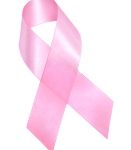 Recent research suggests many doctors show a lack of comfort with the results of breast cancer surgery.
Recent research suggests many doctors show a lack of comfort with the results of breast cancer surgery.
A study published online by the Journal of the American Medical Association showed that nearly a quarter of women who’ve undergone lumpectomies for breast cancer (to have cancerous tissue removed) have had the procedure repeated. A lumpectomy is the most commonly used procedure to remove tumors and cancerous growths in the breast and stop the recurrence of breast cancer.
A wide cross-section of doctors repeat the surgery because there are no structured guidelines to determine how much unaffected breast cancer tissue should be removed. And although the second surgery is seemingly a safety precaution, it is often unnecessary and can result in hospital backlogs. The study did show that some women benefit from having the procedure repeated.
When surgeons perform a lumpectomy they must decide how much healthy tissue they should remove to prevent breast cancer recurrence. Because there is no standard, a surgeon’s decision is based on their own comfort level based on pathology reports. A surgeon attempts to cut cleanly around the tumor and impact the breast as little as possible, but at the same time they must be sure they’ve got enough tissue to halt the spread of breast cancer.
They determine how much tissue to cut by establishing margins, and this is where the discrepancies lie. In cases of breast cancer a tumor is removed and ink is applied to the entire surface area of the specimen and examined under a microscope. The cancerous tissue shows up in the ink and it shows how close the cancerous cells are in proximity to the healthy ones. If there are no cells touching the ink, many doctors feel comfortable that the cancerous tissue has been effectively removed.
Some, however, are less sure. Other surgeons will choose to perform a second operation if cancerous tissue is found up to five millimeters from the healthy and non cancerous tissue. And although a number of doctors seem to believe the theory that bigger margins are safer, however there is no evidence supporting it.
The results of the study were based on the records of 2,206 women who’d had lumpectomies at one of four hospitals in different regions of the country. It showed 22.9 percent of them had follow up surgeries, while half had pathology reports that didn’t indicate any cancerous tissue following the initial operation. However, it also showed that 14 percent of patients did not have another breast cancer surgery for unknown reasons.
Because there are no clear-cut guidelines issued by specialists, some doctors are more prone to recommend follow-up breast cancer surgeries than others. The research showed a discrepancy amongst doctors who perform repeat operations from 0 percent to 70 percent.
If there were clearly defined margins to act as guideline for breast cancer surgeries, many repeat surgeries could be avoided, say researchers. But because they are lacking anything definitive to go by, doctors tend to take the approach that lets them feel most comfortable, even if they are providing an unnecessary breast cancer procedure.
Aside from surgery, practically all women who’ve undergone a lumpectomy receive follow-up treatment in the form of radiation or systemic treatment with chemotherapy or hormones. These treatments greatly reduce the likelihood of the breast cancer returning, so a worthwhile option is to move forward with these treatments instead of a follow-up surgery.
Advertisement
